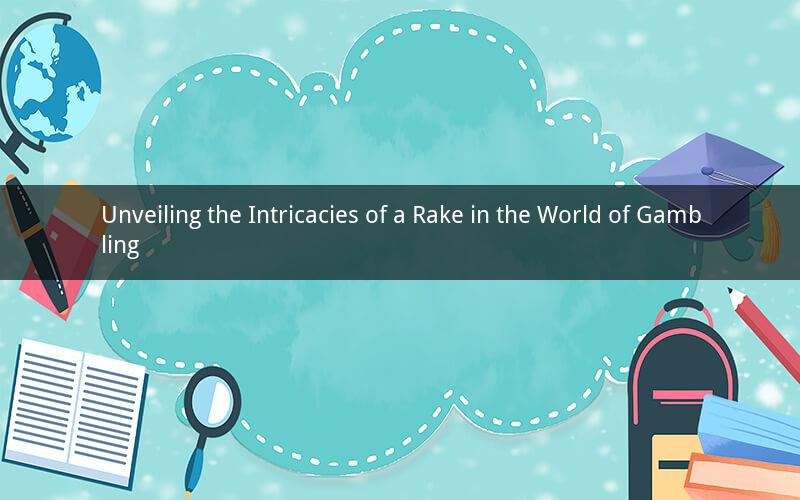
Introduction:
Gambling, with its allure and suspense, has captivated the hearts of millions around the world. From casinos to online platforms, players engage in various games, each with its unique set of rules and strategies. One such term that often leaves beginners bewildered is the "rake." In this article, we will delve into the concept of a rake in gambling, exploring its significance, types, and impact on the gaming experience.
What is a Rake in Gambling?
A rake is a fee or commission charged by a gambling establishment or a dealer for facilitating a game. It is a common practice in certain card games, such as poker, where the dealer collects a percentage of the pot as a form of compensation. The rake serves as a source of revenue for the gambling establishment and ensures the sustainability of the game.
Types of Rake:
1. Fixed Rake: This type of rake involves a predetermined fee that is charged regardless of the size of the pot. For example, a fixed rake of $2 may be imposed on every hand played.
2. Percentage Rake: In this case, the rake is calculated as a percentage of the pot. The percentage can vary depending on the game and the gambling establishment. For instance, a percentage rake of 5% on a $100 pot would result in a $5 rake.
3. Cap Rake: A cap rake sets a maximum limit on the amount of rake collected. This ensures that the rake does not become excessively high, even in large pots.
4. No Rake: Some games or gambling establishments may not charge a rake, allowing players to keep the entire pot.
Impact of Rake on the Game:
The presence of a rake can have a significant impact on the game and the players' experience. Here are a few considerations:
1. Increased Costs: The rake adds to the expenses for players, potentially reducing their chances of winning. It is essential to consider the rake when calculating the overall cost of playing a game.
2. Pot Size: A higher rake can lead to a smaller pot size, affecting the potential winnings for players. It is crucial to choose games with a balanced rake structure to maximize the pot size.
3. Player Strategy: The rake can influence players' strategies, as they may need to consider the cost of the rake when making decisions. This can lead to more conservative play and potentially reduce the level of excitement and unpredictability in the game.
4. Game Popularity: The rake structure can impact the popularity of a game. If the rake is too high, players may opt for alternative games with a more favorable rake structure.
Frequently Asked Questions:
1. Q: Can a rake be avoided in gambling?
A: While it is possible to find games with no rake, it is relatively rare. Most gambling establishments charge a rake as a source of revenue.
2. Q: How does a rake affect the house edge?
A: The rake increases the house edge, as it is an additional cost for players. This means that the odds of winning are slightly lower when a rake is in play.
3. Q: Can a rake be negotiated?
A: Generally, the rake is a fixed fee determined by the gambling establishment. However, in certain cases, players may negotiate a lower rake or find alternative games with a more favorable structure.
4. Q: Is a rake the same as a vig?
A: No, a vig is a different term used in certain gambling contexts, such as sports betting. It refers to a commission charged on bets placed.
5. Q: How can players minimize the impact of a rake?
A: Players can minimize the impact of a rake by choosing games with a lower rake structure, playing at a higher stakes level where the rake is a smaller percentage of the pot, or finding games with no rake.
Conclusion:
Understanding the concept of a rake in gambling is crucial for players to make informed decisions and manage their expectations. While the rake adds to the expenses and can impact the overall experience, players can mitigate its effects by selecting games with a favorable rake structure and adopting strategic play. By unraveling the mysteries of the rake, players can navigate the world of gambling with greater confidence and enjoyment.